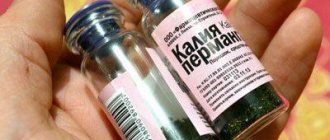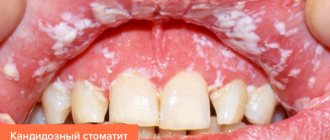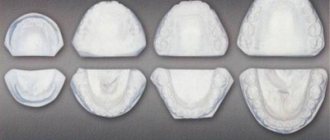Healing properties of the plant
Chamomile is considered one of the oldest medicinal plants. We have received information about the use of chamomile back in the Ancient World. It is possible that she was treated even before the formation of states. The plant is distributed throughout North America and Eurasia.
The main healing properties of chamomile decoction include:
- assistance in the restoration of damaged cells;
- good antiseptic properties;
- the ability to relieve swelling and inflammation;
- cleansing the mucous membranes and tonsils from plaque;
- analgesic properties;
- the ability to use chamomile as an immunomodulator: it helps the immune system cope with the disease;
- effectiveness in relieving itching;
- it facilitates the removal of gases from the intestines;
- stimulates digestive processes;
- Suitable for the treatment of kidney and genitourinary system diseases.
In addition, chamomile is used to create cosmetics, such as lotions and lipsticks. Chamomile is used to make facial compresses to help get rid of acne.
The abundance of beneficial properties is explained by the fact that chamomile contains more than 40 medicinal elements. The inflorescences contain nicotinic, ascorbic and salicylic acids. They also contain sugar, tannins, bitterness, choline, bisabolol, dioxycoumarin, chamazulene, mucus, pectin and other substances.
Chamazulene is the main component of the essential oil, which is contained in flowers up to 1.5%. It determines the main healing properties of chamomile. Flavonoids, luteolin and quercetin provide antimicrobial and antiviral effects. Fernesene and bezaboloxide help the body heal wounds faster.
The apigenin, herniarin and apiin contained in chamomile oil are natural antispasmodics. They dilate the blood vessels of the body and brain, reduce the effect of inflammatory processes. Flowers contain almost all the vitamins a person needs. They contain more than 10 micro- and macroelements needed by the body, including:
- zinc;
- nickel;
- cobalt;
- vanadium;
- magnesium;
- selenium;
- copper;
- iron;
- chromium.
All this led to the fact that chamomile began to be packaged and sold in pharmacies as a cheap and very effective means of combating diseases.
Benefits of Chamomile Tea
Chamomile appeared in healers’ medicine cabinets quite a long time ago, which is why it is called nothing less than pharmaceutical. It includes:
- Apigenin. A substance that can suppress allergies, inflammation of various natures, fight free radicals, and inhibit some types of cancer cells. Of all the herbs used to make teas, chamomile contains the highest amount of apigenin.
- Chrysin, which has strong sedative properties. This substance can reduce anxiety, causeless fear, unconditional panic attacks, hysterical state, and relieve nightmares.
- Coumarin. The substance that gives chamomile its characteristic aroma. Known as an antiallergic agent that relieves swelling, especially associated with impaired lymph circulation, postoperative.
- Ascorbic acid. The most important substance for the normal functioning of connective and bone tissues. Promotes the conversion of cholesterol into bile acids, which stimulates digestion and prevents the formation of gallstones. Is a powerful antioxidant.
- Tannins, which give the plant a bitter taste, help improve the functioning of the gastrointestinal tract, normalize the microflora in the intestines, and get rid of microbes and rotting products. Effective for preventing deposits of heavy metal salts, which cause significant harm to the entire body.
- Pectin. Doctors call it the “orderly worker” of the human body due to its ability to cleanse it of harmful substances without disturbing the natural microflora. Removes radioactive elements, toxic substances and pesticides from the body.
- Carotene. Actively participates in metabolic processes, is important for the formation of bones, nails, teeth, fat deposits, stimulates the growth of new cells, slows down aging, fights viruses and bacteria.
- Essential oils with antimicrobial, antispasmodic and regenerating properties. Vitamins, macro- and microelements: potassium, calcium, zinc, copper, iron, magnesium, manganese.
Unlike black and green tea, chamomile tea does not contain caffeine at all.
Monks from Tibet appreciated all the benefits and harms of chamomile tea, its ability to restore cells and stimulate their regeneration. Therefore, this plant is an essential ingredient in the famous Tibetan elixir of youth.
How to gargle with chamomile?
Those who have never gargled with chamomile face difficulties of a purely psychological nature. In order not to be afraid of vomiting or liquid getting into the lungs, practice first in warm water:
- Inhale deeply, but not to the limit.
- Take some water into your mouth.
- Tilt your head back while slowly starting to release air through your open mouth.
- Release the air gradually so that the liquid gurgles longer in the mouth.
When gargling a sore throat with a medicinal decoction, you must take the following precautions:
- Do not rinse with hot tincture, because it will burn the mucous membrane. Chamomile should be just warm.
- Do not take a lot of broth at once. Firstly, it’s easier to rinse, and secondly, there’s less risk that liquid will get into the esophagus. If you do get it, there is no need to induce vomiting: the broth is not poisonous.
- When throwing your head back, do not overdo it so as not to squeeze your neck.
Doctors advise gargling up to 8-10 times a day. In practice, people rinse as often as they can, hoping for a speedy recovery. After your condition improves, take 4 times a day.
Gargling with chamomile for a sore throat will help, but treatment should not be limited to this. Consult your doctor and buy other medications.
Indications
Rinse with chamomile is required for many ENT diseases. Due to its strong anti-inflammatory effect, the decoction is used to treat the following ailments:
- tonsillitis;
- laryngitis;
- scarlet fever;
- angina;
- pharyngitis;
- stomatitis;
- inflammation of the gums
The decoction reduces the appearance of toothache, and also disinfects the mouth, relieves swelling and inflammation. It can be used for treatment and prevention. There are several recipes for brewing chamomile for gargling. According to reviews, these treatment procedures are effective.
How to brew chamomile for gargling?
A plant purchased at a pharmacy is best suited for preparing a decoction.
But if you have a summer house, you can collect chamomile yourself. You cannot pick the plant near highways and factories: there it becomes saturated with exhaust gases. To make it you need 1.5 teaspoons of crushed chamomile and water.
- Boil water and pour boiling water over chamomile. You can close the mug with a lid to infuse better.
- Wait 20 minutes.
- Strain the broth through a strainer. Discard the chamomile.
- Let the broth cool and gargle.
What does a pharmacy rinse kit consist of?
Classic plant raw materials are dried chamomile flowers. Chamomile oil and its tops are very rarely used for this purpose; roots are almost never used.
Dried flowers are sold in the classic form or crushed, in bags or in bulk.
The preparation recipe depends on the source - a tea drink, decoction or water infusion.
Pharmacy chains sell already prepared chamomile medicines.
Spray "Aqualor" for the throat, containing aloe vera and Roman chamomile extract - "shower for the throat." Release form: bottles of fifty and one hundred twenty-five milliliters. Approved for use in early childhood.
Spray "Aqualor Baby" for newborns does not contain chamomile extract.
What parts of the plant are useful?
Studies have shown that the greatest effect is obtained when using baskets, that is, flowering inflorescences. They must be collected at the very beginning of flowering (from the beginning of June in most regions of Russia). At this time, the petals are positioned horizontally, and the receptacle is still flat.
Keep in mind that in open sunny areas, flowering begins earlier. Old, faded and fading buds are useless for medicinal use. If you plan to harvest the plant for bathing, you can tear off the stems and leaves.
Rinsing
It is required to follow the rules of the procedure:
- It is necessary to use a slightly cooled solution, since procedures can only be performed with a warm one. Due to the hot liquid, the mucous membrane burns, which leads to worsening inflammation.
- You need to add a little broth. This is required not only to irrigate the surface with microbes, but also to avoid swallowing the solution. But even if the product gets into the esophagus, you should not induce vomiting.
- You need to throw your head back. Then the procedure will be effective.
The frequency of sessions is determined by the doctor. But the more often you rinse, the more likely it is to heal faster. Usually 8-10 procedures are carried out per day, as with calendula.
Chamomile during pregnancy and breastfeeding: can you gargle?
Folk remedies are very popular during pregnancy, as women are afraid of harming their baby with potent medications. However, herbal decoctions often cause uterine contractions, which is strictly contraindicated during pregnancy.
When consuming chamomile, you need to know only a few nuances:
- Gargling with chamomile is absolutely safe, since the tincture does not enter the body directly;
- when taken orally, a strong infusion can cause uterine contractions and miscarriage. A weak tincture contains few phytoestrogens, and it does not increase the tone of the uterus;
- A safe dosage is considered to be no more than two teaspoons of chamomile per glass (250 ml) of water.
When breastfeeding, the use of chamomile infusions is also not contraindicated.
The medicinal plant cannot cause any complications or negative reactions in the unborn child. Therefore, doctors sometimes themselves prescribe chamomile infusion to nursing mothers. With mother's milk, the child receives numerous beneficial elements contained in chamomile.
The main thing is not to overdo it. Constant use is not required. Doctors prescribe chamomile in courses. The duration of the course is from 1 to 3 months. After it, you need to stop and switch to using another medicinal plant that has similar properties.
Chamomile decoction can be prescribed in the following cases:
- sleep disturbances and increased nervous excitability;
- respiratory diseases of the respiratory tract;
- skin diseases;
- inflammation of the genitourinary system;
- exacerbation of gastrointestinal diseases.
As you can see, chamomile is safe even when used internally, so gargling definitely won’t do any harm. You just need to make sure that the person does not have an allergic reaction.
WHAT IS NIGHT COUGH DANGEROUS?
Coughing attacks that occur at night can cause many temporary and even permanent health problems. To understand how harmful this condition is to the body, we can cite only one of the complications. Do you like memory impairment, decreased visual acuity, and impaired sense of smell? It would seem that what does a night cough have in common with the loss of such important functions as the ability to clearly see the world around us, remember information and smell? The relationship is more obvious than it seems at first glance: oxygen starvation and lack of rest in the main organ of the human body - the brain. In the dark, the brain must rest and restore resources used during the day. These processes are possible only during deep sleep, into which the body is simply unable to immerse itself - it is constantly awakened by coughing. You will survive several such nights without consequences, but a prolonged dry or wet night cough will sooner or later lead to chronic fatigue of the brain with subsequent dysfunction of its various areas. What to do if a night cough interferes with normal life?
Is it possible to give chamomile to newborns and infants?
The body of a newborn baby is very sensitive to any influences. Many herbs and traditional methods of treatment are contraindicated for children. Chamomile can be used, but with great caution, in small doses.
It has the same effect on a child’s body as on an adult:
- protects against bacteria;
- calms, normalizes sleep;
- strengthens the immune system;
- helps in healing scratches.
Chamomile is an allergen, so make sure your child reacts normally to it. Do an allergy test or give your child a very small dose of the decoction. If rashes occur, treatment should be stopped immediately.
If there is no allergy, the decoction can be used both internally and externally, that is, when rinsing. The problem is that a small child does not know how to gargle. Children learn to rinse with chamomile from about 5 years old. Therefore, brew weak tea and give it to your child. A drink in small doses will help against bloating, colic and intestinal gases.
When preparing a decoction, make the concentration weaker than for an adult. 1 teaspoon per glass of boiling water will be enough. Be sure to let the tincture cool so that your baby doesn’t get burned.
Do not give the decoction to a child who is not yet a few months old! His stomach is not yet strong and is not ready for such tests. An older toddler can be given 50 ml of decoction, distributed in parts.
It is best to consult a pediatrician before treatment.
Contraindications
Chamomile is one of the safest medicinal herbs, but it still has contraindications. The plant should not be used for:
- gastritis during exacerbation;
- nervous disorders;
- hypersensitivity or a history of allergy to the flower;
- diarrhea.
The decoction should be taken with caution in case of cardiac diseases, tachycardia, when taking sedatives, diuretics and medications that thin the blood.
Folk recipes
Over the millennia, people have learned to use chamomile in many different ways.
- For dry and sore throat, brew a tablespoon of herb in a glass of water and add a teaspoon of honey.
- If your sore throat persists, combine chamomile with oak bark, sage, eucalyptus and other extracts.
- Inhalations have a powerful effect. Brew two tablespoons of chamomile in 500 ml of water and breathe in the steam from the solution for 15 minutes. Bend over the vessel and throw a blanket or thick cloth over your head to prevent the steam from escaping. Inhalations are prohibited for purulent sore throat!
- Do foot baths - they also affect the immune system and can help with a sore throat.
- Make a healing oil. Fill a glass jar to the top with herbs and add oil. After the composition has infused for several days, strain off the oil. Then lubricate the sore throat and tonsils with the product, after mixing it with regular vegetable oil in a 1:1 ratio.
- If your throat hurts due to a fungal disease, add a little boric acid to the gargling broth.
- To lose weight, mix a teaspoon of crushed strawberry leaves, St. John's wort, chamomile and birch buds. Pour the finished mixture with 2 cups of boiling water. After 12 hours it can be taken 100 grams twice a day. The decoction accelerates the removal of harmful substances from the body and optimizes salt metabolism.
- For cystitis, mix chamomile with St. John's wort, knotweed, corn silk and cornflower. Pour 400 ml of boiling water over them, strain after an hour. You need to drink immediately after eating.
Other recipes involve brewing chamomile tea. The herb can be combined with mint and lemon balm.
How popular and important are such procedures and when should they be carried out?
It is important to understand that for a sore throat, chamomile will not quickly cure the disease. It has only a limited symptomatic effect, that is, it affects only some manifestations of the disease - pain, inflammation - but not the cause itself. Therefore, you should not expect that with the start of rinsing with chamomile, the disease will immediately end - most likely, it will last as long as it would have lasted without rinsing, the patient will simply tolerate it more easily.
Further, the main medicinal effects of chamomile are not absolute. For example, if it is very painful to swallow during an illness, rinsing will not completely get rid of this pain, and the procedures themselves can only ease the pain syndrome and contribute to a faster completion of it in the final stage of the disease.
Likewise, chamomile tea or decoction is not able to completely relieve inflammation in the throat. It will weaken a little with proper rinsing, but will completely disappear only after the infection is eliminated.
Throat with herpetic sore throat, when all the red papules hurt very much and this pain is almost impossible to completely relieve with chamomile.
Finally, the effect of chamomile when gargling is limited only to the throat. This means that the greatest benefit of its drugs is manifested when:
- Tonsillitis;
- Pharyngitis;
- Laryngitis with localized pain in the upper parts of the throat;
- Stomatitis with the spread of rashes to areas of the palate in the peripharyngeal ring - in this case the pharynx hurts, but for the patient the syndrome feels localized precisely in the throat.
For all these diseases, rinsing can effectively treat inflamed tissues.
At the same time, gargling a sore throat with chamomile preparations is ineffective if the solution itself cannot reach the area of inflammation. So, chamomile practically does not help or has a very weak effect with the following diseases and syndromes:
- Tracheitis - it is physically impossible to gargle so that the solution is in the trachea;
- ARVI - with them, inflammation is localized in the nasal passages or in the upper respiratory tract, which are not treated during rinsing, and the effect of rinsing is much less pronounced and is limited only to moisturizing and cleansing the surfaces of the mucous membranes. If you have a sore throat during ARVI, rinsing with chamomile will ease the pain here, but will have virtually no effect on other symptoms;
- A typical cold, or acute rhinitis - for the same reason as with ARVI: here the focus of inflammation is in the nasal cavities;
- For cough caused by bronchitis or pneumonia. When gargling, it is impossible to “reach” the solution into the lower respiratory tract and chamomile will not have an effect on inflamed tissues.
For coughs, chamomile is generally of little use, since it acts only locally, and it is almost impossible to apply it to inflamed tissues due to bronchitis or pneumonia.
Also, chamomile is practically useless for the prevention of throat diseases. Rinsing with it does not have any protective effect.
Likewise, there is no point in drinking chamomile to treat a throat. When used this way, it has virtually no effect on the inflamed tissues of the pharynx and does not affect the severity of symptoms. However, it is when taken orally that its side effects are most likely. Therefore, by the way, there is no need to give chamomile to a newborn or an infant if he has a red throat - the chamomile preparation will not affect the condition of the throat itself, but it is quite capable of causing diarrhea (very dangerous for a child in the first year of life).
We draw an intermediate conclusion: chamomile can be used for sore throats as an additional remedy, which, with proper treatment, will help to relieve pain and inflammation to some extent. It will not completely cure the disease, but it can alleviate the patient’s condition.
It is important to understand that treating a throat with chamomile is not always completely safe, and in some cases it should be abandoned altogether.
For children
How to brew chamomile for gargling for infants? Small children cannot rinse. Up to 4-5 years, only inhalations using a nebulizer can be performed. Such procedures are effective because they quickly restore the child to normal condition.
From 4-5 years old you can use rinses. How to brew chamomile for gargling for children? Brewing of flowers is carried out according to the standard recipe. Before use, it is preferable to dilute the product with boiled water so that it is less concentrated. During the procedure, parents should explain to the child the rules for rinsing.











